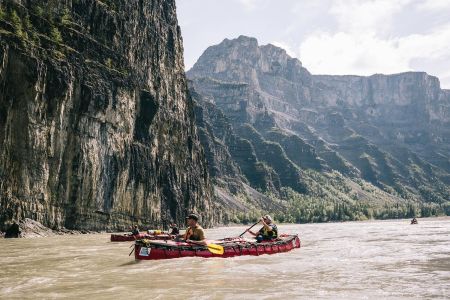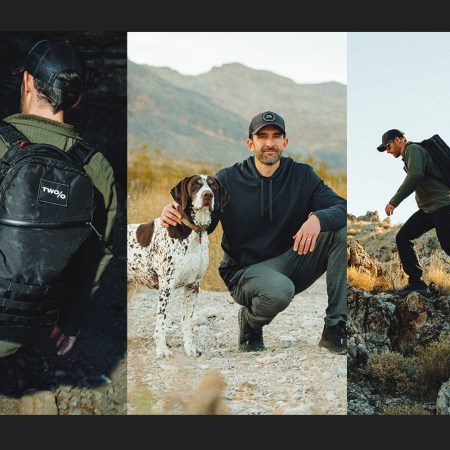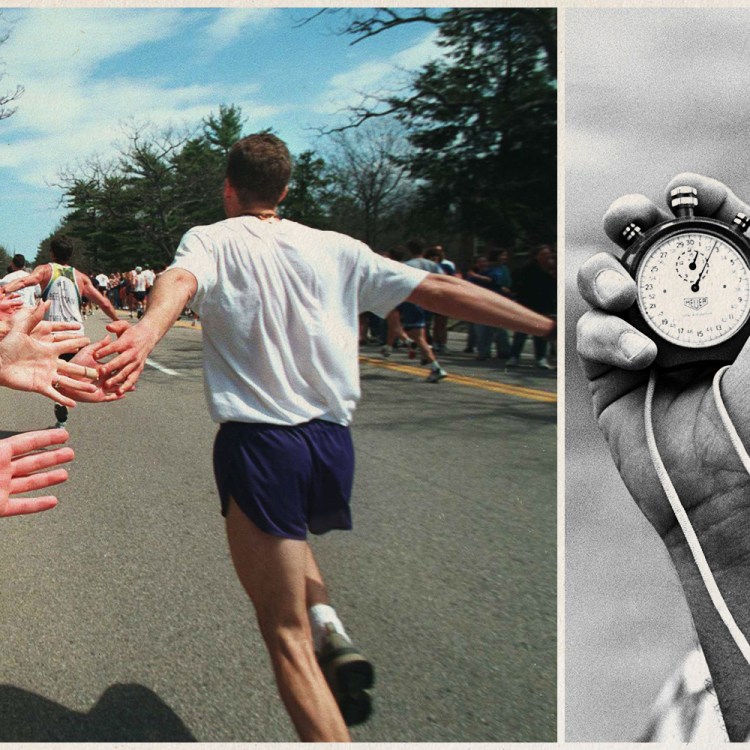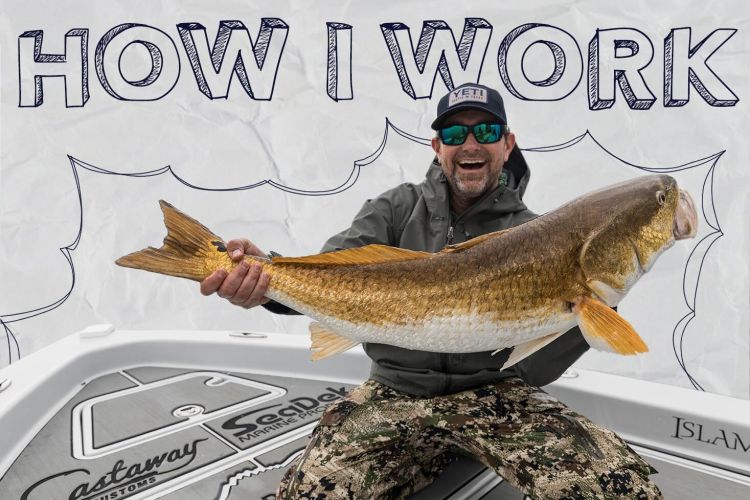Sachin Latti never set out to become an endurance athlete. But after struggling with depression during the early days of the pandemic — a stretch marked by personal turmoil and professional burnout — the Canadian veteran and former law enforcement officer turned to running as a lifeline. In the process, he discovered something deeper. “Service saved my life,” he says. Running gave him a new way to serve, one that helped him heal while helping countless others.
In just four years, he’s gone from novice jogger to ultramarathoner, using the sport as a vehicle to raise awareness and funds for mental health initiatives across the country. His efforts have already brought in over $80,000 for causes supporting veterans, first responders and addiction recovery.
This summer, Latti will attempt his most ambitious challenge yet: running 100 kilometers a day for 75 days straight, crossing the width of Canada on foot. He’ll start in Victoria, British Columbia, on June 16 and hopes to reach St. John’s, Newfoundland, by early September. We caught up with Latti to discuss his training, mindset and recovery protocols — and why service to others has been the greatest motivator of all.
InsideHook: Have you always been a runner? What led you to the sport?
Sachin Latti: Running is relatively new for me. I’ve been an athlete most of my life, on and off, like many people. I’m 47 now and I started fitness when I was probably in high school. I was on the wrestling team. And then life kind of happened, and then I got back into fitness, probably in my late 20s, where I started bodybuilding. I did bodybuilding for a number of years, and then around 37 I kind of transitioned out of bodybuilding and started doing jiu-jitsu. Then around 2020 is when I started exploring running.
I’ve been in law enforcement for 18 years, I’m also a veteran, and I’ve struggled with my mental health for many, many, many years — it really kind of culminated around 2019-2020, when I was going through a divorce, the pandemic kicked off and I was dealing with lots of work issues. All together, things started really affecting me mentally, and I ended up having a major depressive episode. I went to see doctors and ended up getting some medication, but through that process, I wanted to find something physical that I could do that would be able to help manage my mental health. At the time, I didn’t have very many options. I live in Canada, in the Vancouver area, so the pandemic lockdowns were quite significant. We weren’t able to train jiu-jitsu, or even go to the gym, so I was kind of left with running. I hadn’t run since high school. I was the worst runner on my wrestling team. I was always last whenever we had to do timed runs.
I ended up picking up David Goggins’s Can’t Hurt Me. I read the first couple chapters, and then I was like, you know what? Maybe I’ll just chase adversity to a certain degree. The one thing that I hated the most — the thing that was the most challenging for me — was running. So I started running, and it wasn’t anything impressive, man, I was far below average. But I stuck with it.
As I started leaning into service to others without expecting anything in return, I fully started getting better without me even trying.
– Sachin Latti
How did you make the leap from newcomer to ultramarathoner?
Within 10 months of starting, I began seeing some progress. I kept improving and soon I was running about 50 miles a week, and then I was like, maybe there’s a way I can leverage what I’m doing for positivity.
The first thing that came to my mind was to raise funds and awareness for veterans and first responders struggling with occupational stress, injuries and PTSD. On November 7, 2021, I ran my first 100 kilometers from a town called Chilliwack to the Vancouver International Airport. I hadn’t even done a 5K race before. I ended up raising $21,000 for veterans and first responders on that run, and it essentially changed my life. It was a significant paradigm shift in my perspective. I thought, man, I don’t want to really do what I’m doing in the workplace anymore. I transitioned towards doing a big sort of challenge for myself each year and each time raising money for veterans and first responders. So in 2022, from March until November, I ran nine ultramarathons. I ended up doing a bunch of races, learned a ton. I met a ton of people, and through that process I started really developing how to perform better as a runner. I also ended up raising $15,000 that year for veterans and first responders through my running challenges.
Each time, whatever the thing was, I thought I wouldn’t be able to do it. And then I just did it. It inspires you to do more. So in 2023 I did something pretty big for me, I ended up running 22 marathons in 22 consecutive days. If you’re familiar with British Columbia, it’s our westernmost province, and there are a ton of mountains. It’s a beautiful province, and I ended up running right across it. I started in a town on the eastern border of British Columbia, in the mountains, and finished in Victoria at the capital. Basically I ran a full marathon each day across the province.
You must’ve been dealing with a decent amount of altitude.
The overall vertical gain was over 10,000 meters in those 22 days. Also, I picked the number 22 for a significant reason. In 2011, the United States Marines conducted a study revealing that 22 veterans commit suicide every day. So for me, I wanted to highlight that number and raise awareness. I felt it was very critical to do that, and we ended up raising close to $20,000 in those 22 days for the charity that we were supporting. That really inspired me to keep leaning into what I was doing. I’m now in the process of creating a nonprofit foundation, where we raise funds for veterans and first responders, and various other mental health initiatives that require support across Canada.
In the summer of 2024 I presented myself with another significant challenge, when I ran from June to August, 60 kilometers a day for 60 days. So 3,600 kilometers in two months, and that year, we raised $25,000 to support veterans and first responders. All in all, over three years, I ran over 15,000 kilometers and raised over $80,000.
A Father-Son Canoe Trip Through the Grand Canyon of Canada
Only 300 people paddle the Nahanni each year, which meant our small crew of paddlers had 135 miles of wild river to ourselvesLet’s turn to 2025. Can you explain what you have planned for later this year?
Starting June 16, I’ll be raising funds for four different charities that support mental health initiatives, and from a 360-degree perspective — so not only veterans and first responders, but also for youth, men’s addiction and women’s addiction causes, plus a foundation called the Canadian Men’s Health Foundation. I’ll be running 100 kilometers a day for 75 days. The coast-to-coast run is about 7,500 kilometers, starting from Victoria and finishing in St John’s. The vertical gain on that is equivalent to climbing or summiting Mount Everest seven times. It’s a big goal, but I have a lot more people hearing about what I’m doing, and they want to help and join the cause. So now we’re scaling this to a level that hopefully we can follow in the footsteps of Terry Fox or Rick Hansen, who are two legendary Canadians who traversed across Canada for other people, raising funds and awareness. So that’s the goal.
I imagine it’s a rather small group of people who’ve run across Canada.
Yeah, you have ultramarathoners who’ve attempted to either break a record or just see if they can do it themselves. There aren’t a huge number of people have done it for charity, and those who have done it for charity haven’t been runners. They’ve just been people with a purpose. So, as far as I know, I’ll be the first person of color to run across Canada. And I’ll definitely be the first South Asian Canadian to run across Canada, the first veteran, the first first responder to ever attempt it. If I’m able to do it without getting injured, I’ll probably be in the top five fastest runs across Canada. The current record for running across the country is 67 days, 10 hours. And that person’s name is Dave Proctor, who’s a friend of mine and is on my advisory team, and he set that record about three years ago when he ran 106 kilometers a day for 67 days.
Is there a standard route that’s taken, or do you chart your own?
If you want to attempt the speed record, you have to have a certain route. When I first started this project, I was planning to attempt to break the record for the fastest run. But through my last three, four years of fundraising and connecting with people, I’ve traveled the country quite a bit, and I’ve met so many people with various professions and demographics. I want to raise as much awareness and funds as possible, and I don’t think running the speed record would be the best way to do that. The speed record would take me away from some of the major cities, like the Greater Toronto Area. There are 10 million people there. This isn’t an ego job. It’s a thing for other people, not for me. If it was about my ego, then I’d probably stick with going for a record. But to be honest, I don’t really care. I’m more about trying to raise as much money, as much awareness as we possibly can. We could raise millions, fingers crossed. That would help a ton of people, so that’s my focus.
How do you approach the training process for a run of this size?
Running across Canada has been in my heads for six years. So I created a strategy to figure out how I could go from bodybuilder to jiu-jitsu guy to ultramarathoner. I knew I couldn’t do that in a year — it required a few years. Every year, every training block that I did was with the purpose and goal to run across Canada. It was always that. That’s what’s been driving me.
Every year, I progressively increased the volume. I’m running approximately 200 to 250 kilometers weekly, which equates to [124 to 155] miles a week. Yesterday I ran 35 kilometers. Today I’m running 35 kilometers, tomorrow I’m running 40 kilometers. So that’s kind of where the volume is now, but five years ago, man, I couldn’t do that. I really had to create boundaries and take a leave of absence from work. Like, this is all I do now. I train full time, I connect with people, I network, I do podcasts, just to get that message out so that it keeps me motivated and inspired to continue training in the way that I do.
How to Mimic Altitude Training at Sea Level
Professor Grégoire Millet on earning those famous blood-cell benefits — without decamping to 8,000 feetIt’s remarkable that the human body can adapt like that — going from nothing to that level of training in only a few years. How do you feel now with that level of load?
You’re gonna have your little aches and pains here and there, right? But I’m super fortunate to have sponsors that provide me with recovery tools. I’ve also noticed that the number one recovery tool for me is sleep. So if I can get a good night’s sleep, it helps a lot. And supplementation, of course. I use a hydration product from One of One that has the perfect amount of electrolytes. It removes a lot of the cramping and sets me up for the next day so that I’m not as sore. I’m feeling beat up, yes, but I think the mental fatigue is far more challenging. You get that feeling sometimes. But fortunately for me, I’ve been doing it for so long that those sorts of feelings don’t last very long. I can kind of pivot really quickly and then get back to moving forward.
How do you approach the mental side of things, specifically?
I keep it pretty simple. I ask myself: Am I doing my best? Am I doing everything possible? Yes, and yes. So the outcome will be whatever it needs to be. I’ll do my best every single day, and there’s not much more I can do outside of that. I’m gonna raise money, I’m gonna run across the country and whatever ends up happening will happen.
I learned this mindset from a friend of mine a few years ago. He’s an elite performance coach, special operator, tier-one with JTF-2 in Canada, which is equivalent to Seal Team 6 or Delta Force in the U.S. He’s a really close friend of mine, a great mentor. I’ve learned a lot of techniques and strategies from him. He was a founding member of our special operations team 30 years ago. So he’s got a lot of skills and experience that I tap into from time to time to get some guidance. It’s good for me to have those types of people around me. Because of the space that I’m in, supporting veterans and first responders, I have access to some pretty amazing people who can help with mindset. Have you heard of Jocko Willink?
Yeah, of course.
My friend is basically the Canadian version.
Jocko’s answer to anything is always “GOOD,” you know.
Yeah, like any challenge you have: You should be pleased. It’s a gift that you have that challenge, because now you have an opportunity to get better at something. So if you fail at something…cool. Figure it out and get better and do it again. That’s the kind of mentality that I have.

What kind of support crew will you have with you on the run?
I’m going to have at least three to four people with me. Someone to drive the vehicle, someone to help manage any sort of fatigue on my legs, like setting up the cold plunge. When I do have a rest station, those things will be sorted out so that I don’t have to deal with it. On top of that, there will probably be three or four people filming, editing and creating content for social media every day. We’re also working on a documentary, so that at the end of this, we can package it all up and start shopping it around. We’ll probably have a few more people than is required for a crew, but that’s more for filming and stuff like that.
We’ll also have people back here at home, kind of like on overwatch, logistically planning, connecting with all the hotels. There’s different things in each area — when we get to certain areas, we might want to do some media. In bigger cities, we might meet with mayors and that kind of stuff. So having people handle that logistical stuff remotely, and then having my crew that I trust, who I’ll admit I can be a bit of an ass with sometimes. When you’re that tired your best doesn’t always come out. Having people that love me — they trust me, I trust them — will be huge.
What are you using to keep yourself fueled during and after running?
The number one thing from a recovery protocol perspective is sleep. To get the best sleep possible I’ll be making sure I’ve got good sleep hygiene: cool room, dark room, not looking at my phone all night and then getting to bed at a reasonable time every night. If I get seven hours, I’m good to go. Number two, I’ll use the compress boots from Normatec, and I’ll also have a physio and massage session weekly.
From a fueling perspective, I eat everything. It’s not probably what a bodybuilder would do anymore, but I’m burning so many calories that it’s almost impossible for me to eat super healthy and get all the calories that I need. So I’m eating a lot of things that normally I wouldn’t if I wasn’t running this much — sugary stuff: Danishes, bagels, peanut butter, ice cream, cookies. On the runs themselves I use liquid fuel. I’ve figured out that my sweat rate is around 700 millimeters per hour. So what I do is, every hour I have about 700 to 800 millimeters of water. I put a One of One hydration product in there, and then I put four grams of the One of One protein in there, and then I put a carb source in there, and I just shake that up, and I drink that each hour as I’m running. So it gives me around 250-300 calories per hour, all my sodium, all my electrolytes, and a small amount of protein which is necessary to keep me satiated. Then as soon as I’m done with whatever run I’m on, I’ll have like two scoops, about 60 grams of protein, just to make sure that I get enough for the day.
Inside the Navy SEALs’ Mythical “Monster Mash” Marathon
Former SEAL Jonathan Wilson breaks down the grueling training exercise, and the 211-mile Veterans Day challenge it inspiredHas it been difficult to hold onto muscle while doing this much running?
Up until January I was still going to the gym. I was still lifting. I was lifting about three times a week, but more so just to kind of maintain the physique that I have. Now since January, I’ve stopped lifting all together. I’m only running. That’s it. Just to make sure that I’m not over-burdening my body, and all the recovery I get is for running. I’ve shrunk a lot over the years. People will look at me and be like, how are you so built? I’m like, I used to be 20 pounds bigger. It’s funny, when I first started this I was talking to my special forces friend — he’s 60 or 61 right now — I was talking to him about running across Canada eventually, and he started laughing. He was like, you’re basically Thor right now, you’re gonna turn into Loki.
Hey, Loki is still a formidable character.
Right? Hey, I’m cool with it, man. When you’re bodybuilding excessively and really training hard, you track all your macros and do all these things. But coming into this running space has helped me not be so focused on food, on all those things. I’m pleased with just turning into what I need to be for what I’m trying to do, rather than having a physique that I want other people to see. After I’m done with this challenge I’ll probably do something else. And I’ll transform for that.
You mentioned jiu-jitsu earlier — I train as well and know that many people talk about its mental health benefits. How would you say that those benefits compare to those you’ve received from running?
Yeah I think with these types of things, it’s very much based on the individual, right? So for me, I loved going to jiu-jitsu because of the camaraderie. You get to roll with people. You get to basically practice killing people. They practice on you, but you guys are still buddies right after. So that was a cool component of it.
But for me, I’m not a massive people person, so running was very helpful, because I just like being by myself. I also have a great deal of anxiety and depression. So for me, I needed longer forms of physical activity to help burn down the white noise in my head. So jiu-jitsu was good for an hour and a half, but it almost wasn’t enough movement for me, in that aspect. Whereas with the running, if I’m going out for three hours, I can also process yesterday. Whereas with jiu-jitsu, you’re in the moment, you have to survive, with running I can reflect on everything. My life, what’s going on, what I need to do, how I need to do it, and it allows me to think for a few hours, so I can plan my day or the week or the month, and then just start taking action.
What would you say has been the biggest takeaway from your journey thus far?
Service saved my life. Service to the community, service to other people — it really gave me something to focus on, rather than worrying about my own issues and problems in life. That’s really the through line of this whole thing for me. I was a pretty selfish person about six or seven years ago, right? And when I say selfish, I mean just focused on my own self and what I need to do and all that kind of stuff. What I’ve recognized is as soon as I started leaning into service to others without expecting anything in return, I fully started getting better without me even trying, if that makes sense. Service to others, man. It has been the number one thing.
Where’s the best place for people to follow along with your journey?
We have a website up right now: sachinmotion.com. When it’s ready, people will be able to see where I’m at while I’m running, and there will be a full map of the route. It’ll be connected to my social media, too, so people can see what I’m up to each day. It’ll also have a function where people from local areas can sign up to run some kilometers with me if they want to. Also, if someone wants to make a donation they can do so through the platform, and if you’re Canadian you’ll get a Canadian tax receipt.
Whether you’re looking to get into shape, or just get out of a funk, The Charge has got you covered. Sign up for our new wellness newsletter today.



























